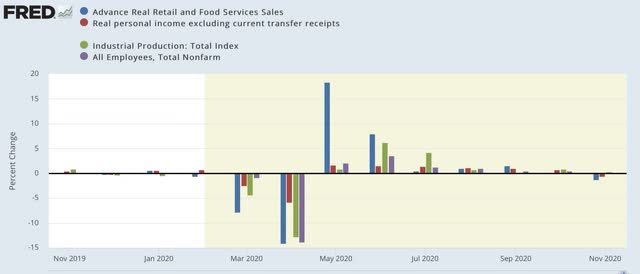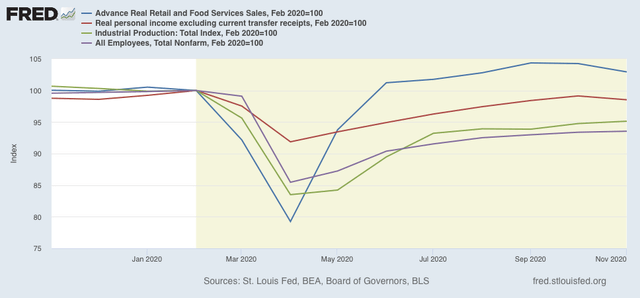- by New Deal democrat
All of the important economic data for 2020 has already been released. In this final week only November house prices and one last week of jobless claims remain.
So this is a good time to take a look at the current state of the economy as it has unfolded in this pandemic year.
The 4 most important components in the NBER’s toolkit for calling recessions and expansions are real sales, real income, production, and employment. With the exception of manufacturers’ and wholesalers’ sales, all of the above components, including retail sales, have already been released through November. Let’s take a look:

The onset of the pandemic in March is really obvious, and the outsized distortions, first to the downside, and then to the upside, continued through July. In the last 3 months, the gains have slowed dramatically, and in November two of the four components went negative.
Norming each of the four components to 100 as of February shows that sales have actually made new highs since then, and income (thanks to the emergency stimulus) is only slightly below February’s level. But production and employment are still at quite depressed levels:

As of this morning, Trump finally signed the supplemental stimulus passed by Congress, but only after the unemployed lost one week of benefits.
While it is a mistake to project coincident trends forward, my expectation is that with the pandemic at its worst, more deterioration of the 4 coincident components of the economy is likely before the effect of vaccination and coherent Federal policy under the incoming Biden Administration make their mark.